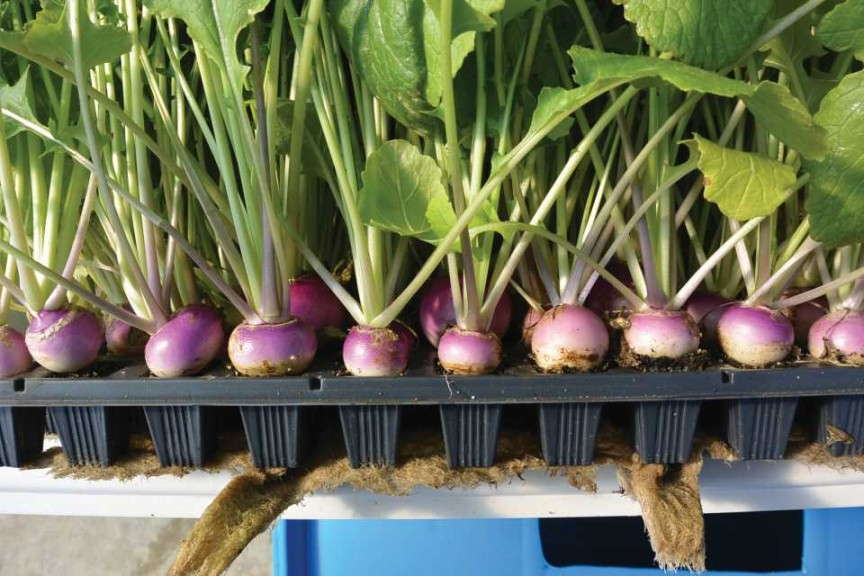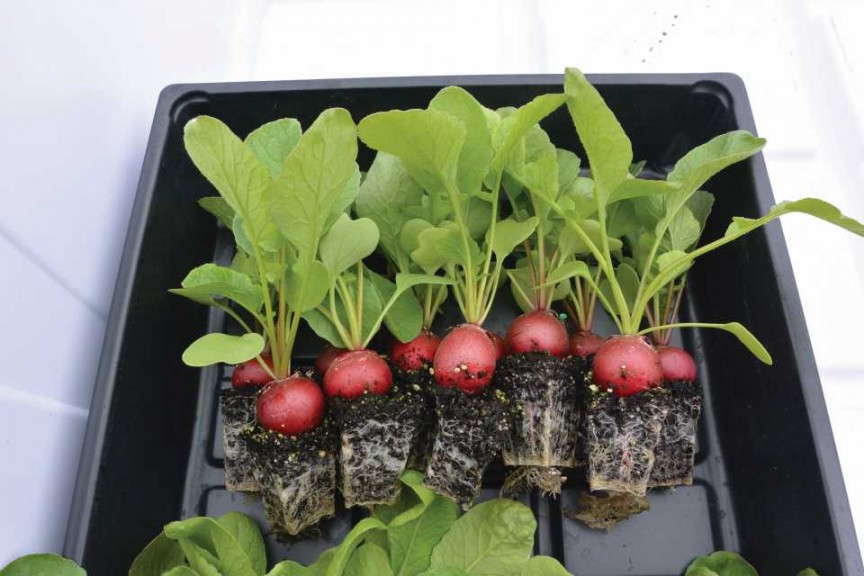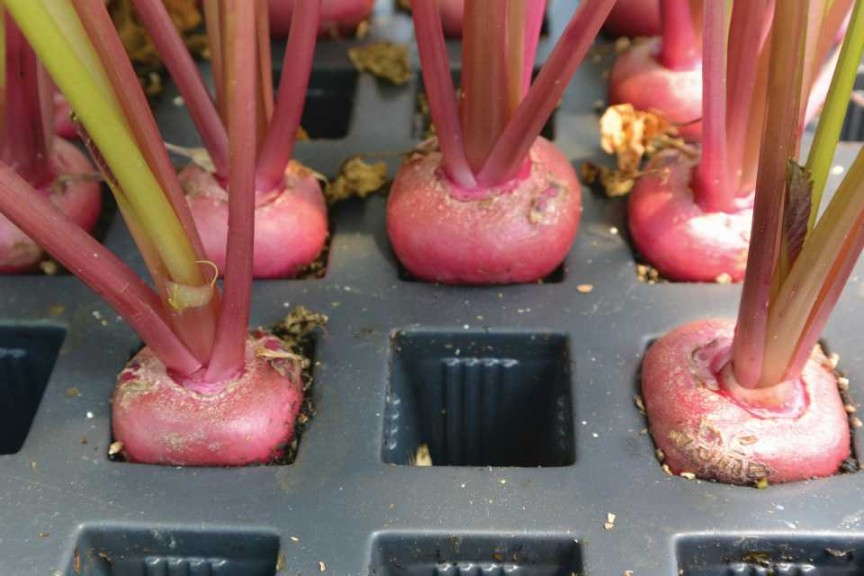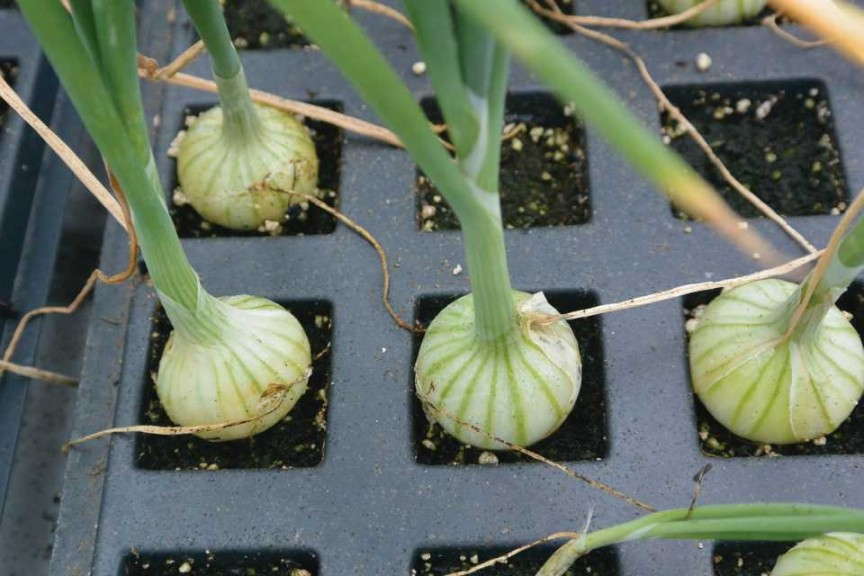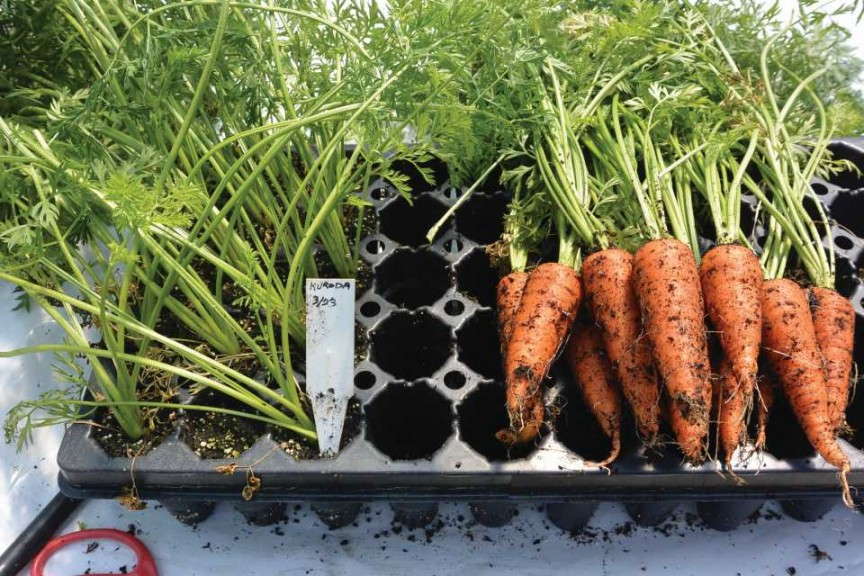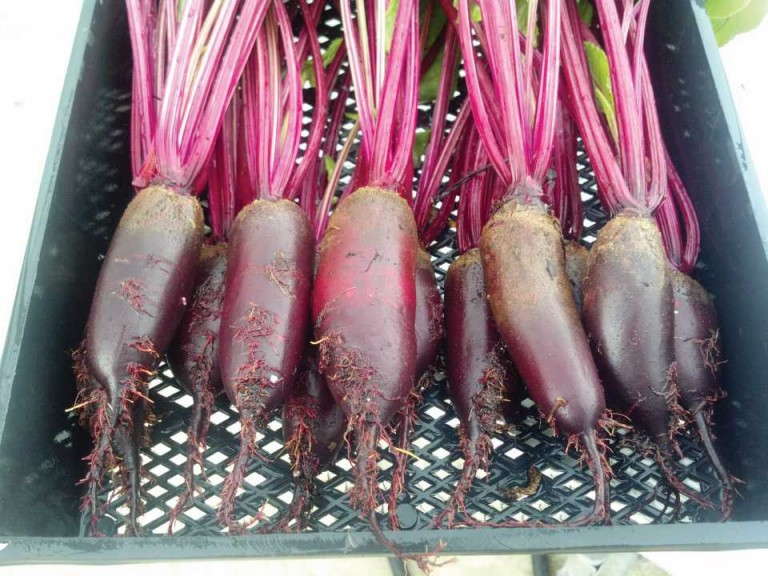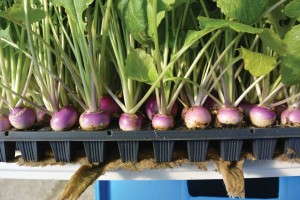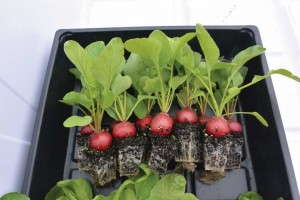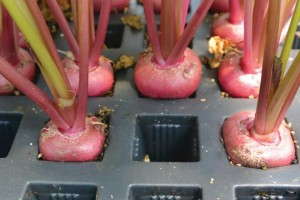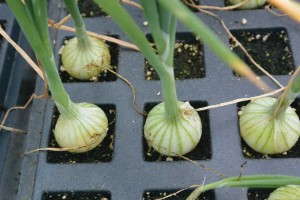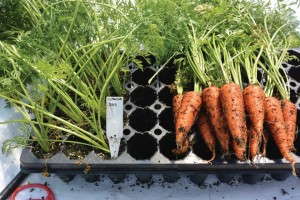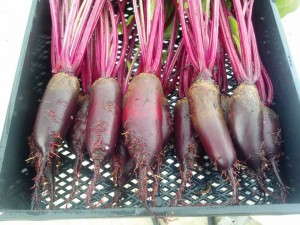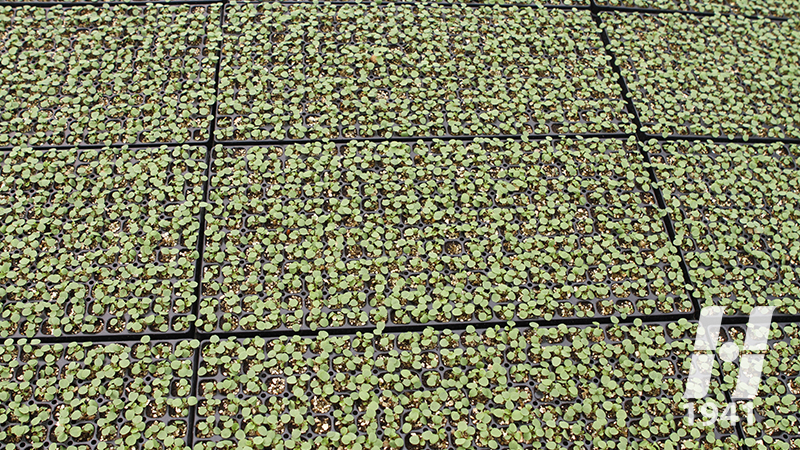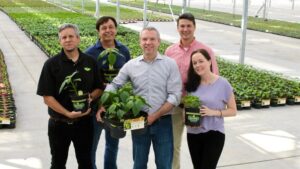Root Crops And Plug Trays: A Perfect Match
 As my greenhouse hydroponic vegetable project moves forward, different crop categories are being researched based on the part of the plant harvested for consumption. This classification groups crops based on common production practices.
As my greenhouse hydroponic vegetable project moves forward, different crop categories are being researched based on the part of the plant harvested for consumption. This classification groups crops based on common production practices.
In a logical progression, it begins at the growing media level with root crops and proceeds up the scaffold to crops with distinctive petioles to those whose leaves comprise the majority of the harvest and finally to flowering crops grown for their fruit. This column focuses on root crops.
Shaking Up The Plug World
It’s been a lot of fun exploring a wide assortment of root crops grown in plug trays using flood and drain (ebb/flood) irrigation. I’ve succeeded with radish, carrot, beet, turnip and onion to date and have a few more crop species to investigate in the season ahead. An immediate observation after the first crop cycle is that this category could use some attention from plug tray manufacturers, as there are opportunities to design plug trays that will better suit its novel production requirements.
[blackoutgallery id=”64487″]
From a physiological perspective, this production technique turns traditional plug production upside down. When most of us think of plugs, we think of bedding crops where immature seedlings or rooted cuttings spend a few weeks in the tray before being transplanted to their final containers. Growing a plant to maturity in the plug tray is quite foreign to growers of ornamental crops.
A good example of what I’m talking about is how we view external root growth in a bedding plant plug. Root development out the bottom drainage hole in the plug cell is undesirable. It can mean the transplant date was delayed, and the plants were held too long. Removing such plants from their cells can damage the roots, resulting in unwanted transplant shock.
When a radish, carrot, beet or turnip is grown to harvest in a plug tray, the majority of the root system develops outside the plug cell, forming a root mat that resides in the plug tray flood tray interface. I found this to be a concern initially because of my traditional perspective, and even gave thought to how it could be avoided. But this instinctive reaction soon yielded to the observation that this was a desirable, even convenient, response.
Forget About Root Pruning
Learning that plug cell volume does not play the same role for a radish or beet that it does for a geranium or poinsettia cutting opens the door to production efficiency options. The plug cell volume can be minimal to satisfy a shorter list of criteria, compared to traditional plug production. These criteria include supporting the newly sown seed, providing it with a germination environment and offering initial seedling stabilization. Once the roots reach the plug tray/flood tray interface, the growing media itself becomes practically obsolete and the system’s hydroponic design assumes control (Figure 1).
Of course, flood and drain cycles must be scheduled properly to prevent drying damage to the root mat between cycles. I didn’t notice anything demanding in this regard. The use of timers and normal daily monitoring made it easy to manage the interface.
Root Crop Production Reduces Media Cost
After citing that there are fewer critical criteria to satisfy in this novel type of plug production, two criteria that no longer need to be met are significant. The plug cell volume does not need to provide the majority of the water holding capacity or nutrient reservoir for the maturing plant. The external root mass residing in the hydroponic environment accomplishes both, and is arguably more efficient.
An obvious outcome from this is that reducing the cell volume cuts down on the amount of growing media required to fill the tray, which reduces production cost. The savings should be money that stays in the grower’s pocket, making this crop category more profitable to include in a vegetable production program.
Figure 2 shows a radish crop in a traditional plug tray that provides more growing media than is required. One can conclude from the picture that the radish would perform just as well with significantly less growing media because of its hydroponic environment.
Lastly, I have yet to document the differences between plant root mass in a traditionally irrigated, large-cell crop that discourages external root growth compared to that in a small-cell, hydroponic environment that allows external growth. My suspicion is that we will see greater total root mass in the smaller cell system.
Breeders And Tray Manufacturers Can Help Growing Opportunities
Figure 3 reminds us of the adage that a round peg cannot fit into a square hole. Beyond whether the shape of the plug cell is round or square, I believe an opportunity exists for plant breeders to improve the uniformity of cultivar offerings in this crop category. By assigning high priority to where the swollen root section that is harvested expands with regard to the growing media surface, breeders will go beyond the simple round peg, square-hole dilemma shown in the picture.
Ensuring that the turnip, radish or onion (Figure 4) develops on top of the growing media surface, and not below it, will ensure success with the minimal cell volume technique. One can envision plug tray selection being made simply to accommodate the diameter of the desired root crop with a standard, minimum cell volume. If a cultivar of radish is one inch in diameter, then a 1020 tray could be configured to provide approximately 10 x 20 cells, about 200 radishes per tray.
One can also imagine a system where, for instance, this hypothetical 200 tray could be used for root crops with larger diameters simply by sowing every other cell, every third, and so on. Perhaps the tray could be prefilled with growing media where unused cells are skipped. Remember, the cell volume doesn’t matter once the seedling’s roots exit the drainage hole. I’m eager to work with such a tray to demonstrate that larger diameter cultivars can be grown just as easily in a small-cell volume as smaller cultivars.
Another option is to determine an optimal, universal and minimal cell volume and then produce a series of plug tray configurations to address diameters of a wide assortment of root crops. To date, I have restricted cultivar selection to those described as miniature or suitable for quick crops. Perhaps full-size, two- to three-inch diameter beets and onions could be options with plug tray densities of 50 or less. While the economics still need to be examined, the production requirements could easily be met.
Figures 5 and 6 show carrots and beets grown in five-inch deep, 50-cell nursery plug trays. Initial observations include careful cultivar selection to ensure the five-inch depth limitation is matched to the carrot or beet in question. Granted, there aren’t many cylindrical beet cultivars to choose from, as this shape is a novelty. But for carrots, I think the Nantes category with its wide shoulder and tapered root fit this plug tray better than traditional long and slender shapes.
Next Steps For Root Crops
As the project moves ahead, Ethephon treatment will be investigated to determine how ethylene application will control top growth on crops such as carrot and beet. Ethephon work is also being scheduled for hydroponic herbs to prevent flowering of basil, cilantro and dill.
A recurring message in this project is that our imagination may be the only thing that limits what we can grow in the greenhouse hydroponically to engage the locally grown food movement. With some help from plug tray manufacturers and plant breeders, I see few limitations in the category of root crops to hold us back.





